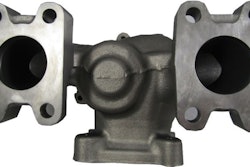In the hustle and bustle of today's fast-paced industrial world, keeping downtime at bay becomes crucial for businesses. Whether it's equipment breakdowns, maintenance delays, or clunky processes, downtime can spell trouble for businesses – think lost profits and ballooning costs. But fear not, because there are tools and tactics that can help wrangle downtime and give a boost to productivity. One key player in this arena is the Computerized Maintenance Management System (CMMS). In this article, we'll dive into how a CMMS can be your ally in the quest to minimize downtime and crank up overall efficiency.
When it comes to industrial setups, downtime can crash the party due to all sorts of reasons: gear going kaput, maintenance not playing nice, spare parts doing a vanishing act, or communication breakdowns between the maintenance crew. These disruptions can pack a punch, messing up production schedules, ticking off customers, and leaving a dent in your profits. That's where implementing CMMS software enters the scene, equipped with a toolbox of solutions to tackle these challenges head-on and curb the downtime drama.
Understanding downtime
First off, let's demystify downtime. It's simply the time when a process isn't up and running. But here's the twist: downtime isn't always the same. There are two main types – planned and unplanned.
Planned downtime: the good kind
Picture this: the factory decides, "Hey, let's take a break and fix things up." That's planned downtime. It's like a mini-vacation for machines. This is your chance to give machinery some much-needed TLC – inspections, cleaning, part replacements, you name it. It might sound like a buzzkill, but it's essential. Planned downtime lets everyone prep and schedule tasks, like calling in the repair wizards or ordering parts.
Unplanned downtime: the trouble maker
Unplanned downtime, on the other hand, is like that unexpected guest who shows up unannounced. It's when your machinery takes an unscheduled break – thanks to a part giving up, supplies vanishing into thin air, a power hiccup, and the list goes on. This type of downtime is the real mischief-maker, as it messes up your plans and leaves you scrambling.
Tactics for avoiding unplanned downtime
Plan ahead with smart maintenance
It might sound simple, but having a solid maintenance plan is a game-changer. This means laying out steps like identifying issues, planning maintenance tasks, scheduling the work, assigning the right folks, and giving things a final thumbs-up. Having this plan at your fingertips helps keep things organized and your team on the same page.
Stay on top with preventive maintenance
Preventive maintenance is like giving your equipment a regular check-up. It can happen during planned downtime or even while things are running. Swapping parts during planned downtime lets you prep and save time. But even when the show's on, things like adding lubricants or cleaning can extend the life of your gear.
Invest in a data-driven maintenance strategy
A data-driven approach to maintenance is where the magic happens. Collecting data on what could go wrong helps you be one step ahead. But it's not just about collecting data; you need a clear plan on how to use it. Without a game plan, all that data might as well be a jumbled puzzle.
Get to the root of the issue
Solving any problem starts with getting to the bottom of it. It's like diagnosing an illness – you need to know what's causing the symptoms. To dodge downtime, figure out when, where, and how it's happening. This detective work helps you tackle the root cause and not just the symptoms.
Keep an eye on things
Think of your equipment like a health-conscious friend – you need to keep tabs on it. Using monitoring equipment, like smart sensors, helps catch early warning signs of trouble. This way, you can fix things before they snowball into bigger problems.
Build equipment reliability
Regular equipment monitoring and maintenance, thanks to a trusty CMMS, makes your equipment more reliable. Sticking to a schedule, inspecting, and fixing things up all contribute to gear that's less likely to throw a tantrum. And when your equipment's on your side, unplanned breakdowns take a back seat, giving you more uptime and smoother operations.
When it comes down to it, a good chunk of unplanned downtime is avoidable. Redirecting resources toward prevention is a smart move to dodge the revenue losses and cost spikes that come with downtime. If you're considering an Equipment and Asset Management (EAM) overhaul, it's the perfect opportunity to tackle unplanned downtime. Revamp those maintenance processes, roll out a savvy predictive maintenance strategy, and tidy up your data – it's a recipe for smoother operations and happier balance sheets.












